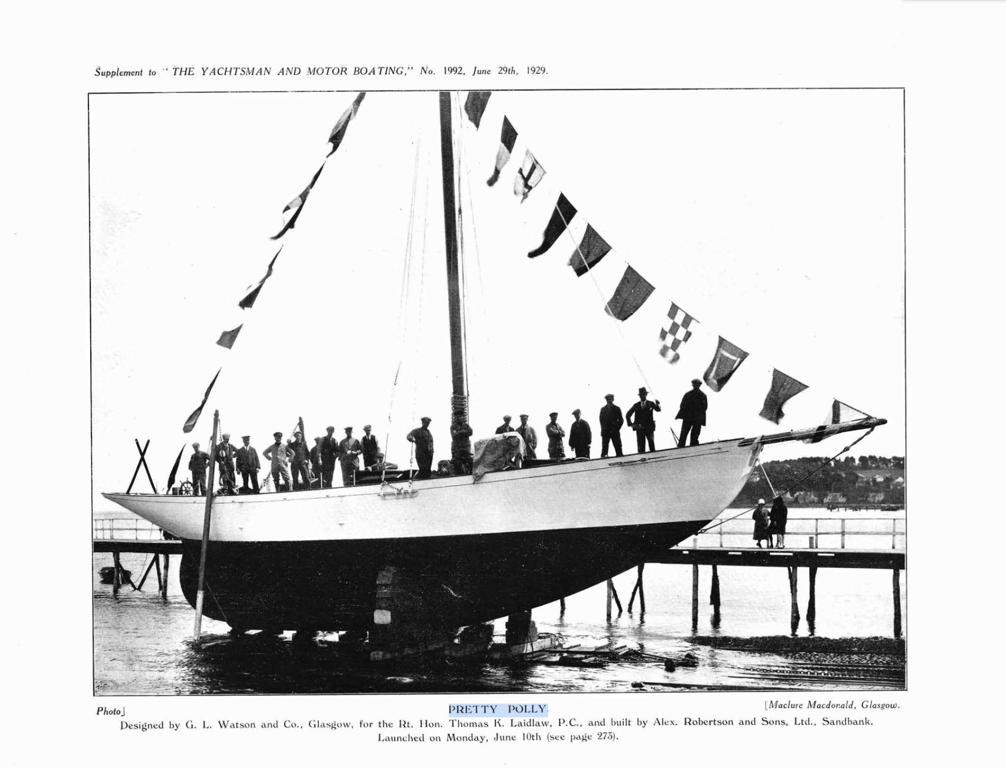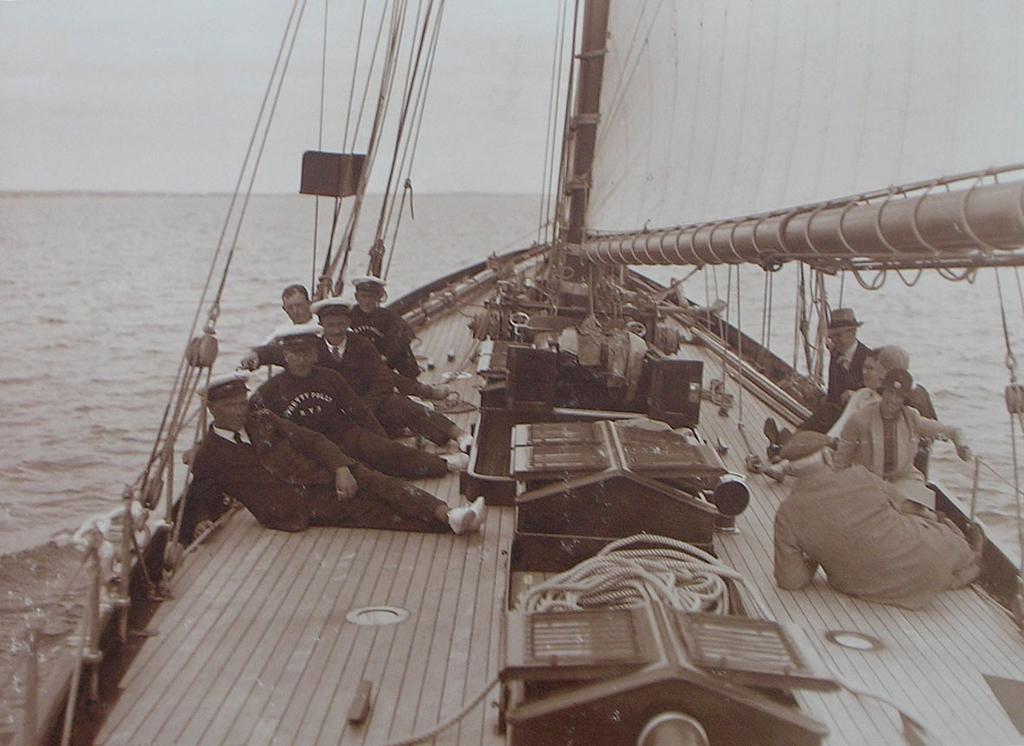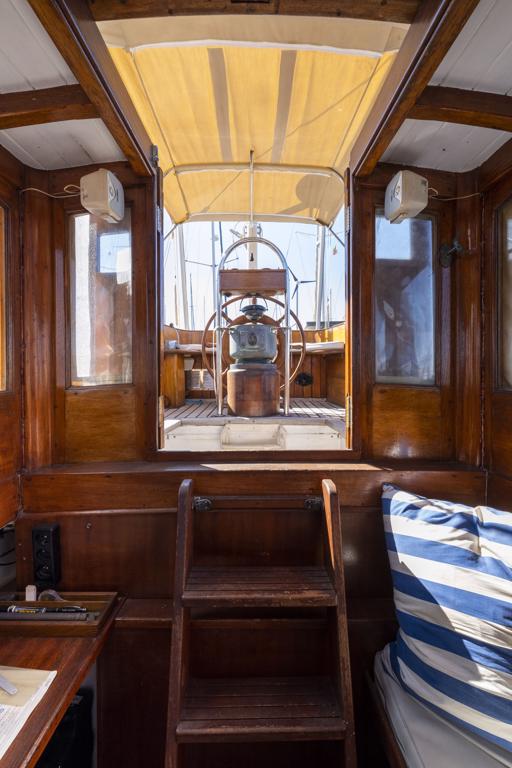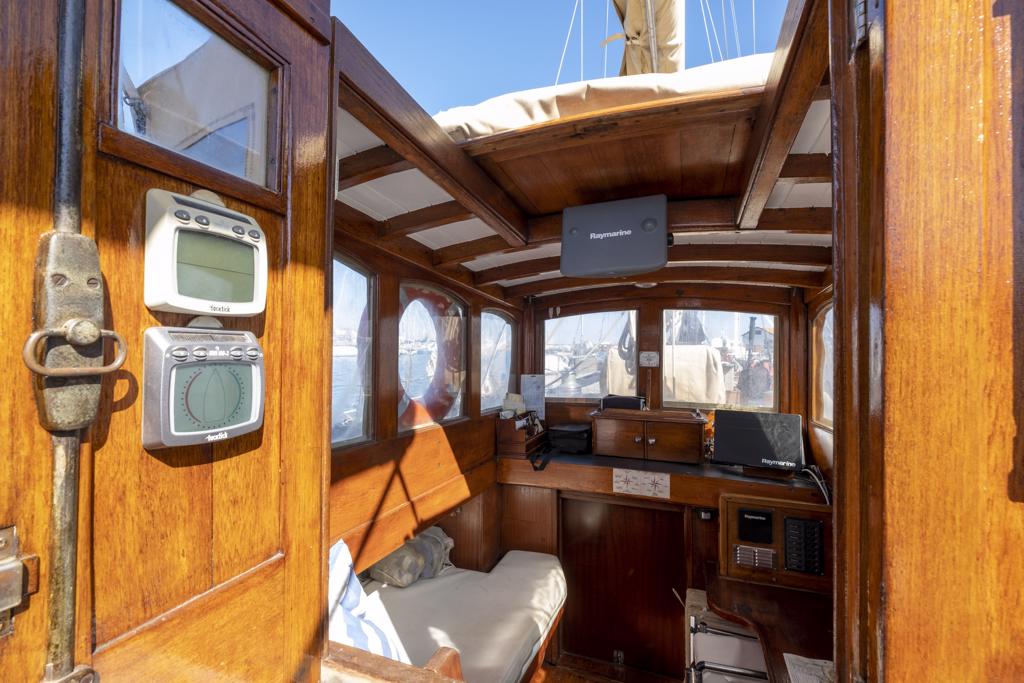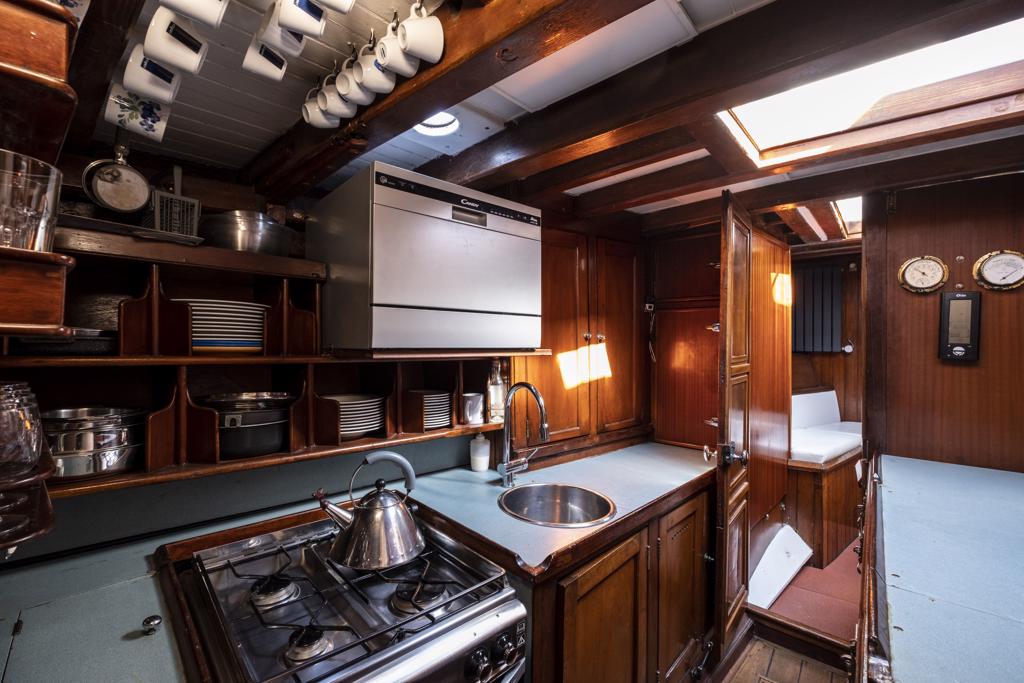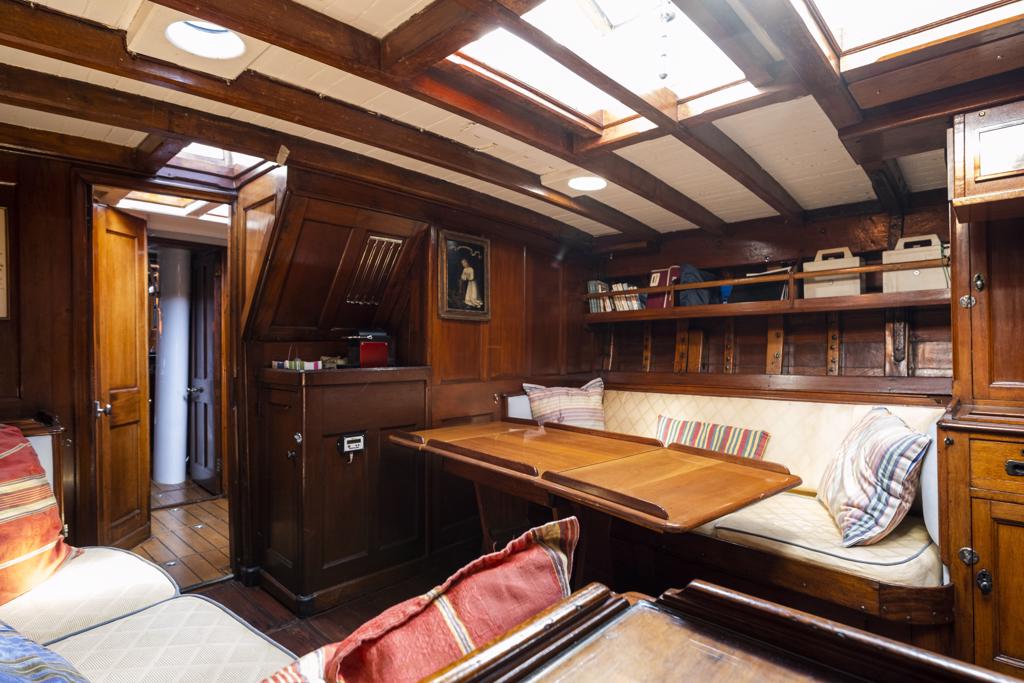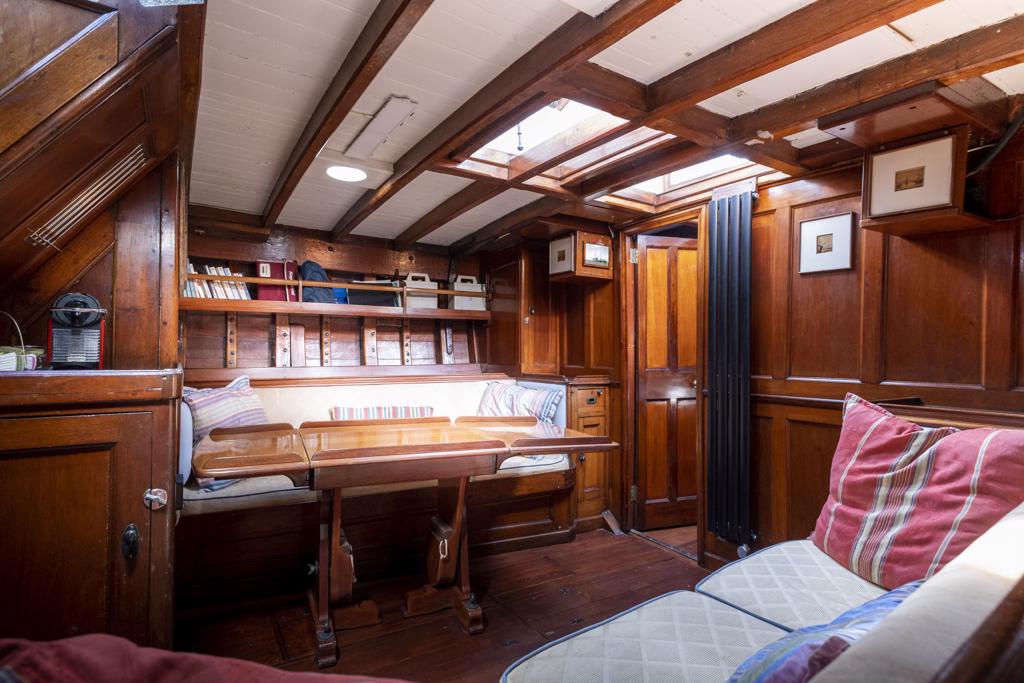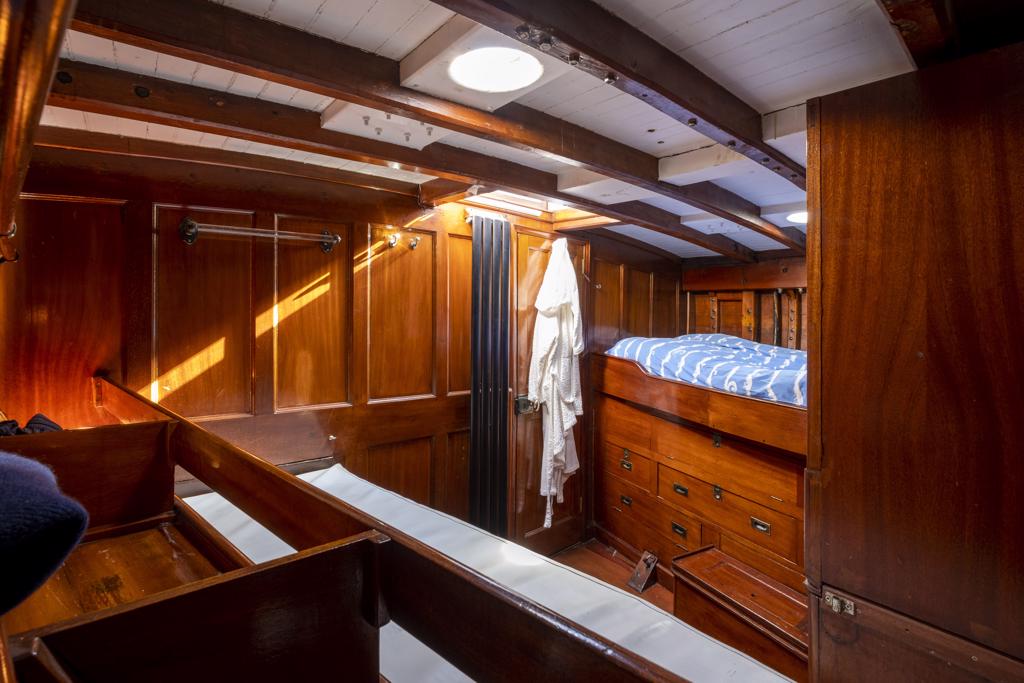History
The Rt. Hon. Thomas Kennedy Laidlaw, the last Privy Councillor to be appointed to the Irish Privy Council, member of the Royal Yacht Squadron of Cowes was a racehorse breeder in Ireland. He chose to name his new yacht after his friend Major Eustace Loder’s exceptional mare who had outperformed all the thoroughbreds of her generation between 1903 and 1905 and who was considered, in 1929 and still is, to be one of the most exceptional mares of the century: Pretty Polly. He had James R. Barnett, of G.L. Watson’s Glasgow office, design his yacht Pretty Polly, a high performance yacht that would allow him to continue racing: a 50-foot on waterline sailing yacht that would be one of the last Gaff Cutters built in Scotland.
Built by Alexander Robertson & Sons Ltd, Pretty Polly (listed as #180 in the yard’s book) was launched at Sandbank, on the Clyde, on June 10th 1929. The yacht, manned by a crew of 8 sailors and skippered by Sandy Geoffrey – former petty officer of the R.Y. Britannia, won many races including the Clyde Fortnight 1935, second at The Queen Mary’s Cup 1935 and a first on the Coronation Race in 1937. Pretty Polly was given to his son Robert ‘Robin’, who like him was a member of the Royal Yacht Squadron and the Jockey Club. In order not to depend anymore on tugs, Robin installed a Belgius auxiliary 2-cylinder 15 HP gasoline engine in 1937.
In 1947 Sir Colin McNeal acquired Pretty Polly. He dismantled William Fife’s large Moonbeam (restored and very well known in actual classic boats races ) which he owned at the time, and renamed her ‘Moonbeam Junior‘, then ‘Moonbeam‘. A member of the Royal Corinthian Yacht Club, whose members were shipowners and skippers, he first added a doghouse and then a raised helm seat for more comfort during races and cruises. He also reinforced the engine, replacing in 1953 the 2-cylinder auxiliary engine by a 4-cylinder Gardner engine of 60 HP, again replaced in 1959 by another 6 cylinders Gardner of 95 HP. Retired from business and racing between 1956 and 1970 he used Moonbeam as a pleasure yacht to sail in the Mediterranean during the summer and the Caribbean in winter.
Harold and Patricia Sulger, with ambitions to sail around the world, purchased Moonbeam in 1970. They renamed her ‘Saracen’.
In 1976, they sold Saracen to Jack du Gan, a Pan Am pilot. The refit judged necessary by H.M. Tiedemann in his November 1976 report, had Ted Hood design the aluminium mast still in place. From her home port of Palm Beach, Florida, Saracen sailed on charter in the Caribbean for nearly 10 years.
Graham H. Lambeth, a Philadelphia real estate entrepreneur, acquired Saracen in 1987, he renamed her ‘Courtlinne‘ in honor of his daughters Courtney and Alinne. He sailed her to Florida and then up to New Jersey to undertake the necessary restoration. In 1988, Courtlinne was put on the hard for a refit at Greenwich on the Cohansey (a river on the north shore of the Delaware). The real estate crisis forced him to give up.
In September 1990, Courtlinne was offered for sale to Giorgio Lo Stimolo, an Italian architect working in Paris, who had been looking for a classic yacht for three years with very specific requirements. Courtlinne meets his criteria: the hull and the teak planking as well as the mast and shrouds are in perfect condition; the interior layout is designed for pleasure sailing and the original furniture still present, although in poor condition, promises once restored, to make this yacht very pleasant to live on. In fact, Paul Coble concludes his December 1990 survey by noting that he has rarely seen a boat of this age in such good condition in a 14 page report.
Nevertheless, the rig, a boom that was too short, the out-of-order mainsail (which still bears Moonbeam‘s n°8) and insufficient fittings do not allow to consider crossing the Atlantic in safety. The boat was therefore repatriated to Europe by cargo ship from Baltimore to Le Havre. Two years of restoration carried out afloat at Choisy le Roi on the Seine brought this yacht back to her former splendour. Her new owner gave her his wife’s middle name, JULIETTE.
Her first sailing from Deauville brought her back to Cowes, England, where Beken was delighted to find this yacht he remembered so well and to take her portrait once again. The similarity of his photos with those of 30 and 60 years ago shows that modernisation has not altered her elegant lines on the water.
After a few years at the maritime museum in La Rochelle, then in Port Saint Louis du Rhône near Marseille, JULIETTE has been in Palermo, Sicily since 2009.
In 2019, to give some youth to this 90 year old yacht and to return some integrity and reliability to her hull, a new campaign of works was entrusted to the Oceanica Naval Cantiere of Licata, in Sicily. On this occasion, a new electrical system was installed and her engine has been replaced by another similar Gardner.


